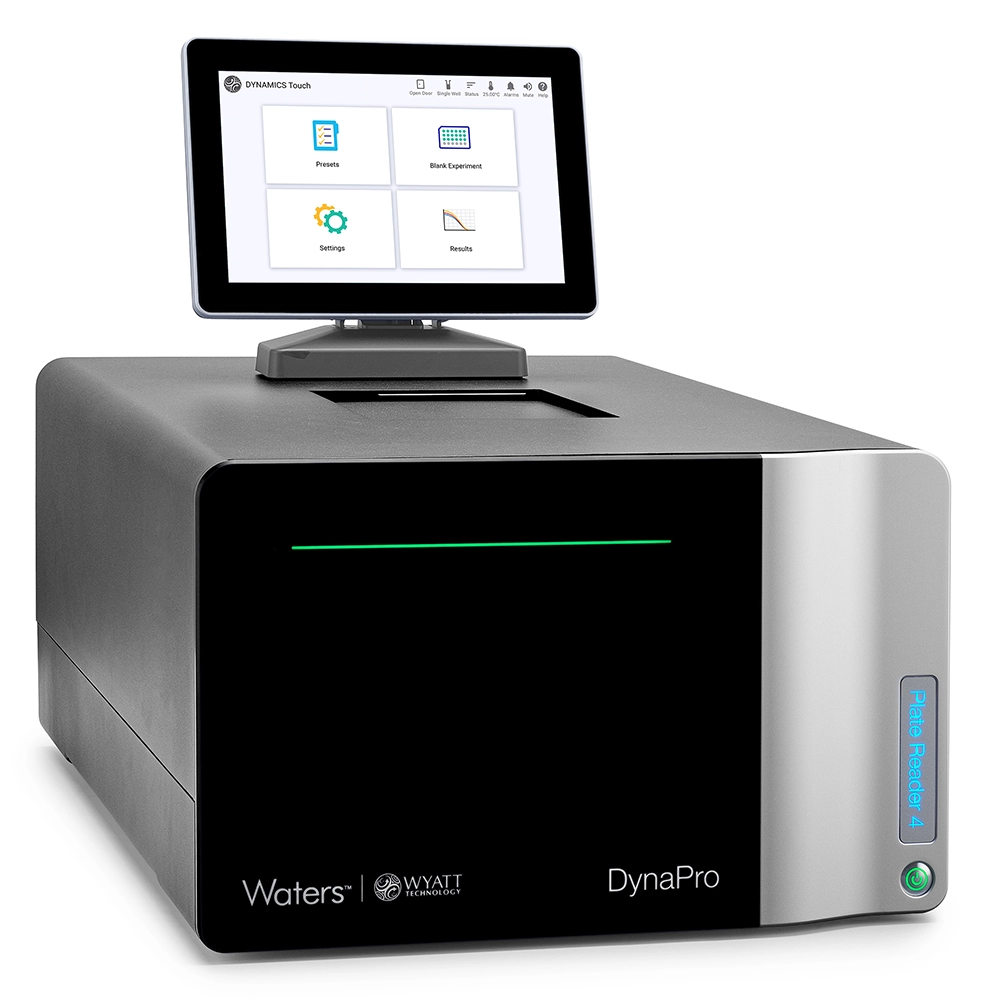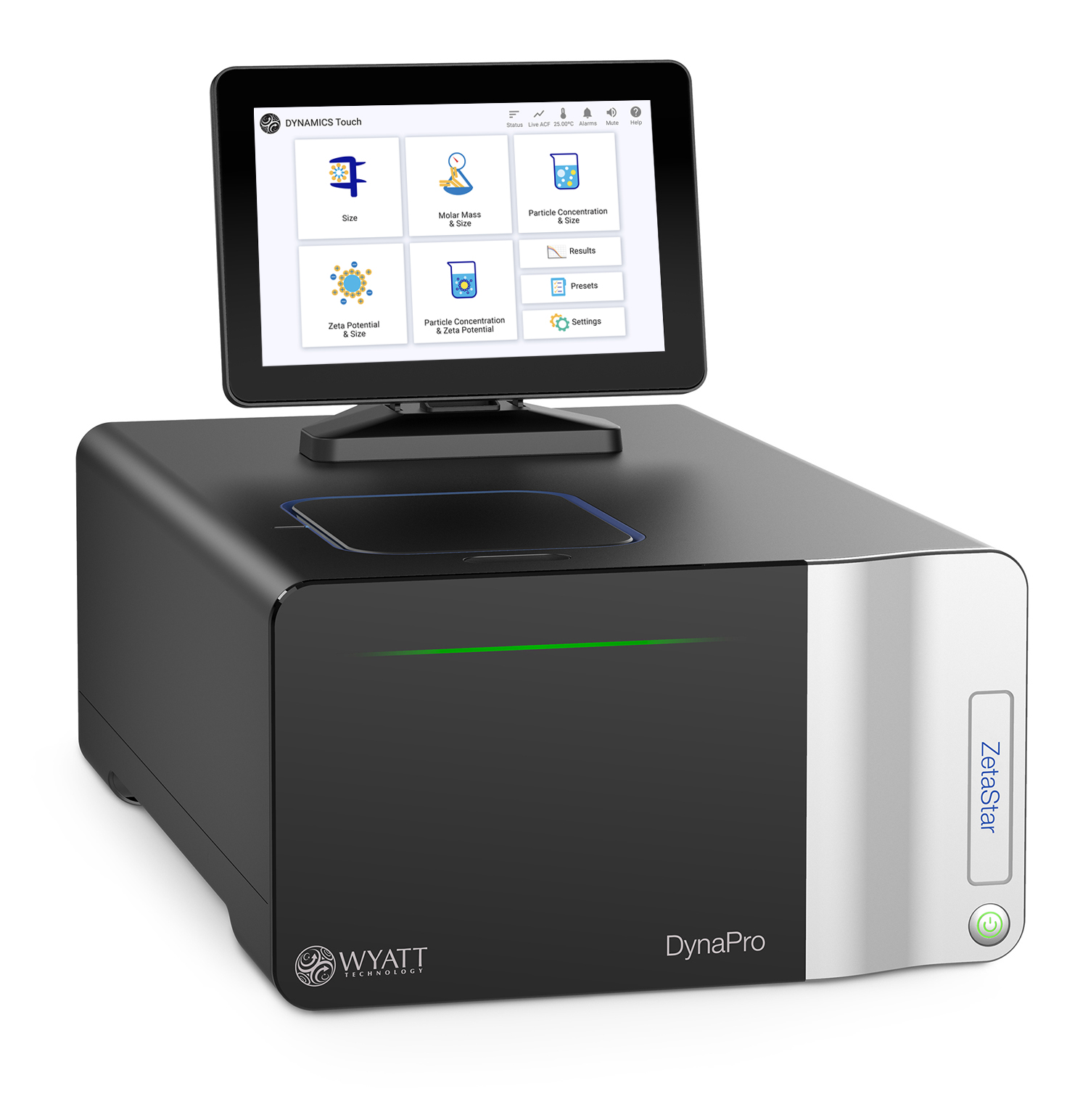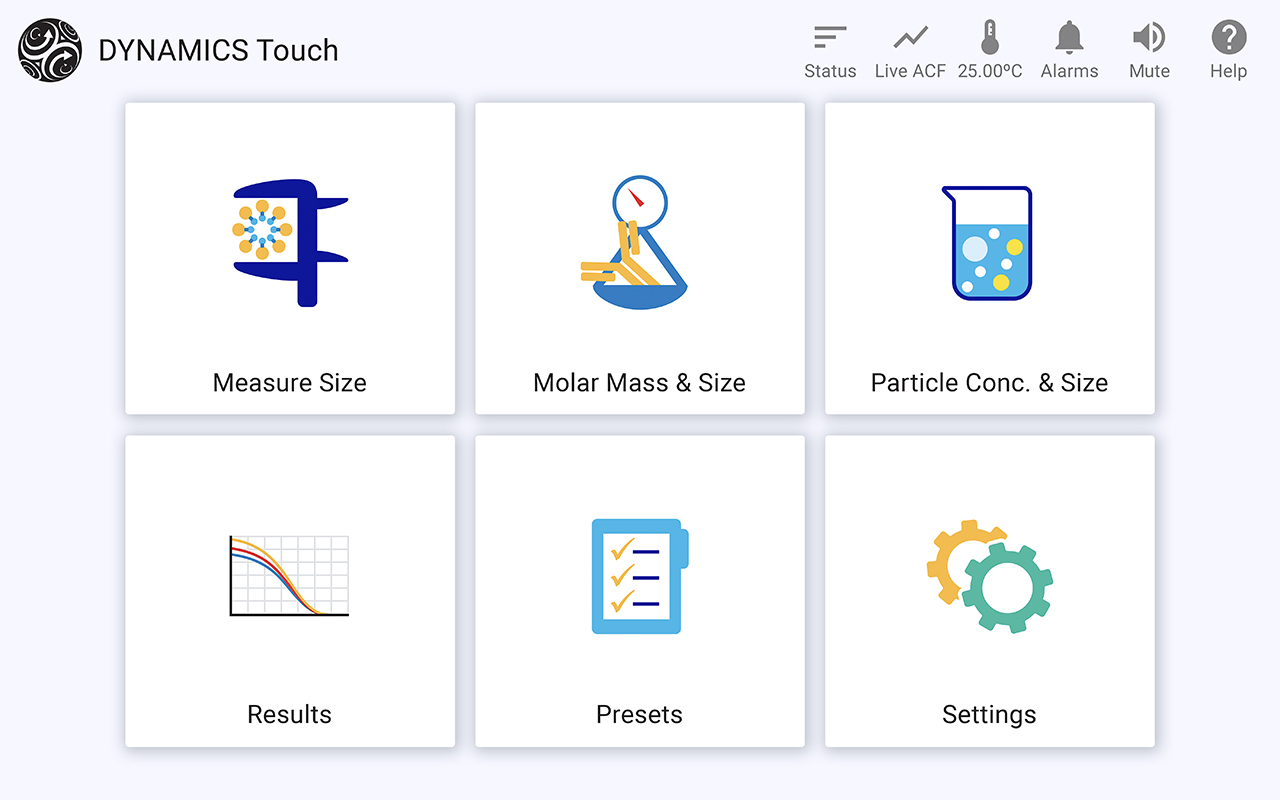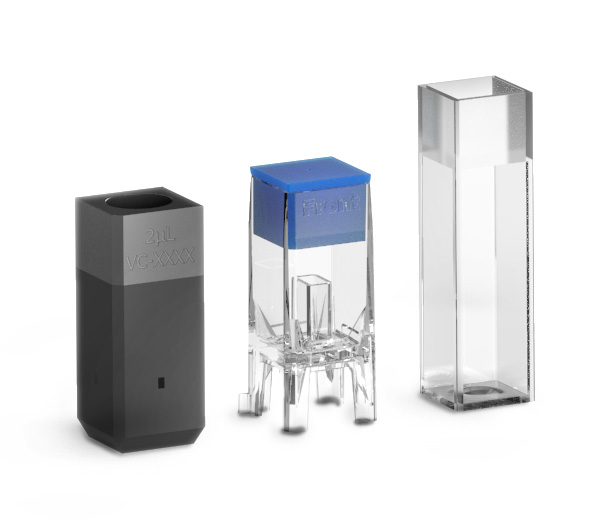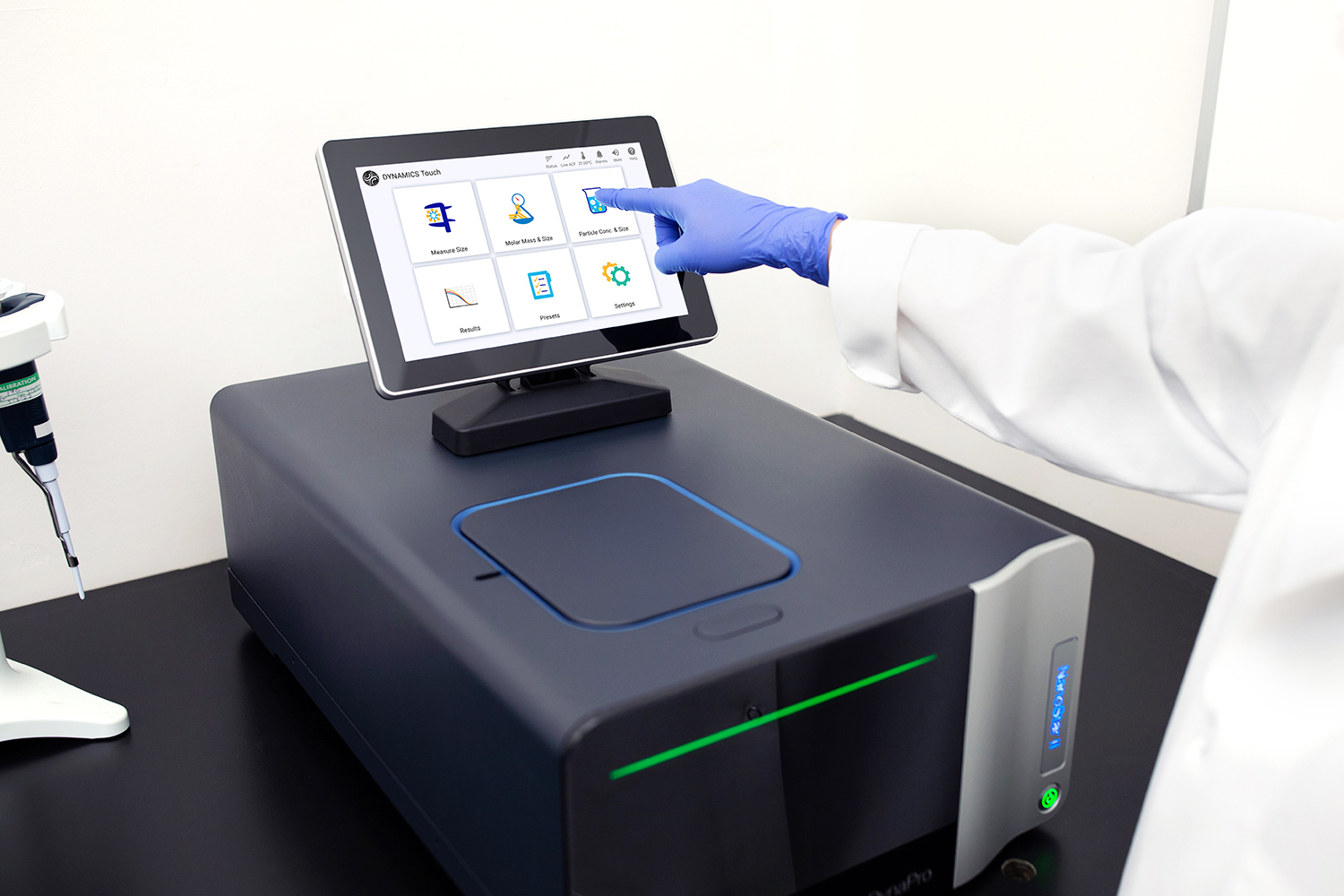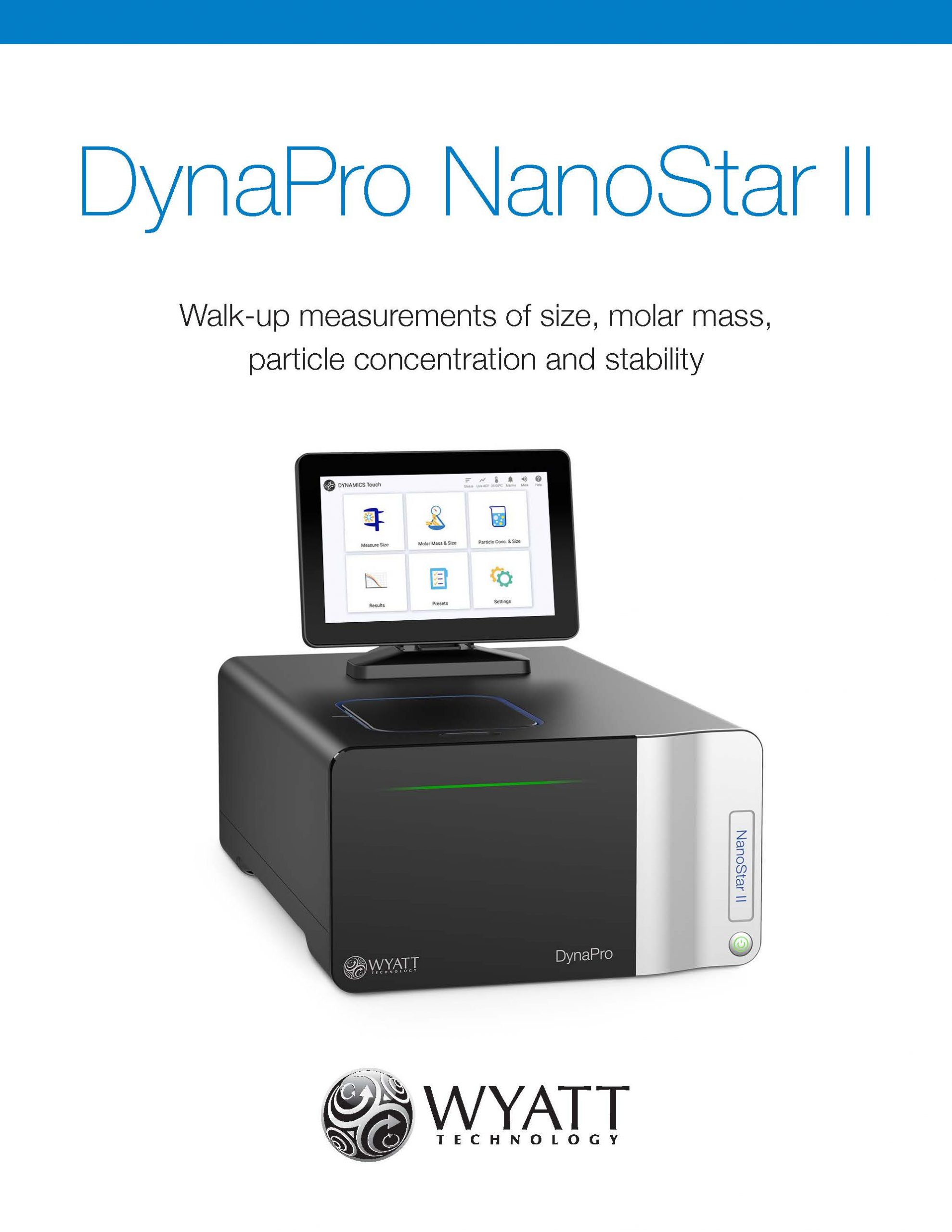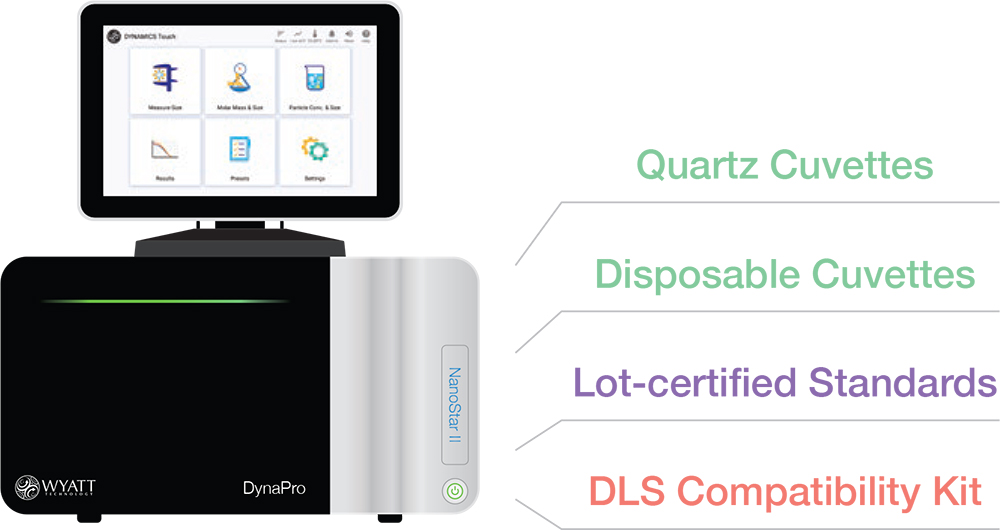DynaPro™ NanoStar™
Product Overview
Product Description
Brochure
On-Line Operation
Advanced Technology
Accessories
Software
Specifications
Other DLS & ELS Instruments
Publications
Request Info
Traditional dynamic light scattering, just better.
Unique cuvette-based DLS
The DynaPro NanoStar II is a unique cuvette-based DLS instrument used for the analysis of proteins, gene therapy vectors, viruses and virus-like particles, promiscuous inhibitors, micelles, liposomes, lipid and metallic nanoparticles, and more. To accommodate scarce and precious samples, specially designed quartz cuvettes afford robust, accurate measurements with as little as 2 µL of solution, while our proprietary disposable cuvettes provide comparable sensitivity with as little as 4 µL!
Walk-up operation with DYNAMICS Touch™
The NanoStar is the only DLS instrument to provide a fully integrated, walk-up measurement experience. No need to boot up your lab PC, launch the DLS software, connect to the instrument and worry about where your data files are stored. DYNAMICS Touch is an intuitive—yet capable—DLS measurement app that resides right on the NanoStar. Via the full-size touch screen display, DYNAMICS Touch guides you through the entire setup and measurement process. It tells you if the data quality is sufficient for confidence in the results, and displays them instantly. Data files and concise PDF reports can be stored on the instrument, transferred via the network or downloaded to a flash drive. You can even send the report to your phone!
Full-featured analyses with DYNAMICS™
DYNAMICS is our powerful PC-based, comprehensive software package for collecting, analyzing, and reporting batch dynamic and static light scattering data. It performs advanced analyses and compares multiple data files to identify trends and statistics. DYNAMICS can control the NanoStar and acquire data directly, or read in DYNAMICS Touch data files.DYNAMICS is offered with a 21 CFR Part 11 compliant Security Pack option, enabling the use of the DynaPro NanoStar in a GMP environment for quality control or at-line process monitoring.
Size and beyond
Coupled with the versatile and user-friendly DYNAMICS™ software and DYNAMICS Touch™ on-board app, the NanoStar may be utilized to measure not just size, size distributions, particle concentration and weight-average molar mass, but also solution properties relevant to sample stability: the second virial coefficient (A2 or B22), the diffusion interaction parameter (kD), turbidity or opalescence and the temperature of protein melting or aggregation onset (Tm, Tonset).
Cuvette, and yet...
... still another feature unique to the NanoStar: the optical fiber pickup may be coupled to any of Wyatt's on-line MALS detectors - the DAWN™ or miniDAWN™ - to add on-line DLS measurements in the same detection volume as SEC-MALS or FFF-MALS measurements.
Combining numerous benefits, the NanoStar is an unparalleled cuvette-based DLS detector. For higher productivity, consider the DynaPro™™ Plate Reader, the only commercially available DLS plate reader measuring in situ for high-throughput screening of thousands of conditions per day in industry-standard microwell plates.
Key features
- DYNAMICS Touch on-board app for walk-up operation
- Rh from 0.2 nm - 1000 nm
- Temperature from -10 °C to +120 °C
- Molecular weight from 300 Da to 1 MDa
- Turbidity from 1 to 80 NTU
- Separate, optimized SLS and DLS detection channels
- Auto-attenuation over five orders of magnitude
Versatile, high-quality options
Make measurements in super-high-quality quartz cuvettes with as little as 2 µL of sample, aqueous or organic solvents, over the entire, extended temperature range. This cuvette incorporates a solvent reservoir to prevent sample evaporation over high-temperature or extended analyses.
Our proprietary disposable cuvettes nearly match the optical quality of quartz yet require only 4 µL of sample, aqueous or select polar solvents. For convenience, larger-volume quartz and disposable cuvettes are also available.
Walk-up measurements of size, molar mass, particle concentration and stability
Click here to request a copy of our DynaPro NanoStar brochure.
On-Line MALS and DLS in a shared flow cell
Simultaneous determination of molar mass and size is crucial for structural and conformational analysis of macromolecules (e.g., branching ratio of polymers, discriminating empty or filled vesicles, etc.). For smaller molecules such as proteins, MALS cannot measure size directly via the angular dependence and so DLS is an important complementary technique.
On-Line DLS is a valuable addition to your SEC-MALS or FFF-MALS characterization instrumentation, providing hydrodynamic radii and, in combination with MALS, the shape factor Rg:Rh of larger nanoparticles. Instead of adding another detector in-line, with the associated band broadening, dilution, signal misalignment and loss of resolution, Wyatt's innovative solution is to share the MALS laser and flow cell with the DLS detector.
With the online DLS option, a NanoStar II can be coupled to a MALS flow cell. The ASTRA™ chromatography software connects to the MALS and DLS detectors to acquire data simultaneously from both, analyzing and reporting the individual information (molecular weight, rms radius, hydrodynamic radius) and results derived from the combination, such as molecular configuration by shape factor.
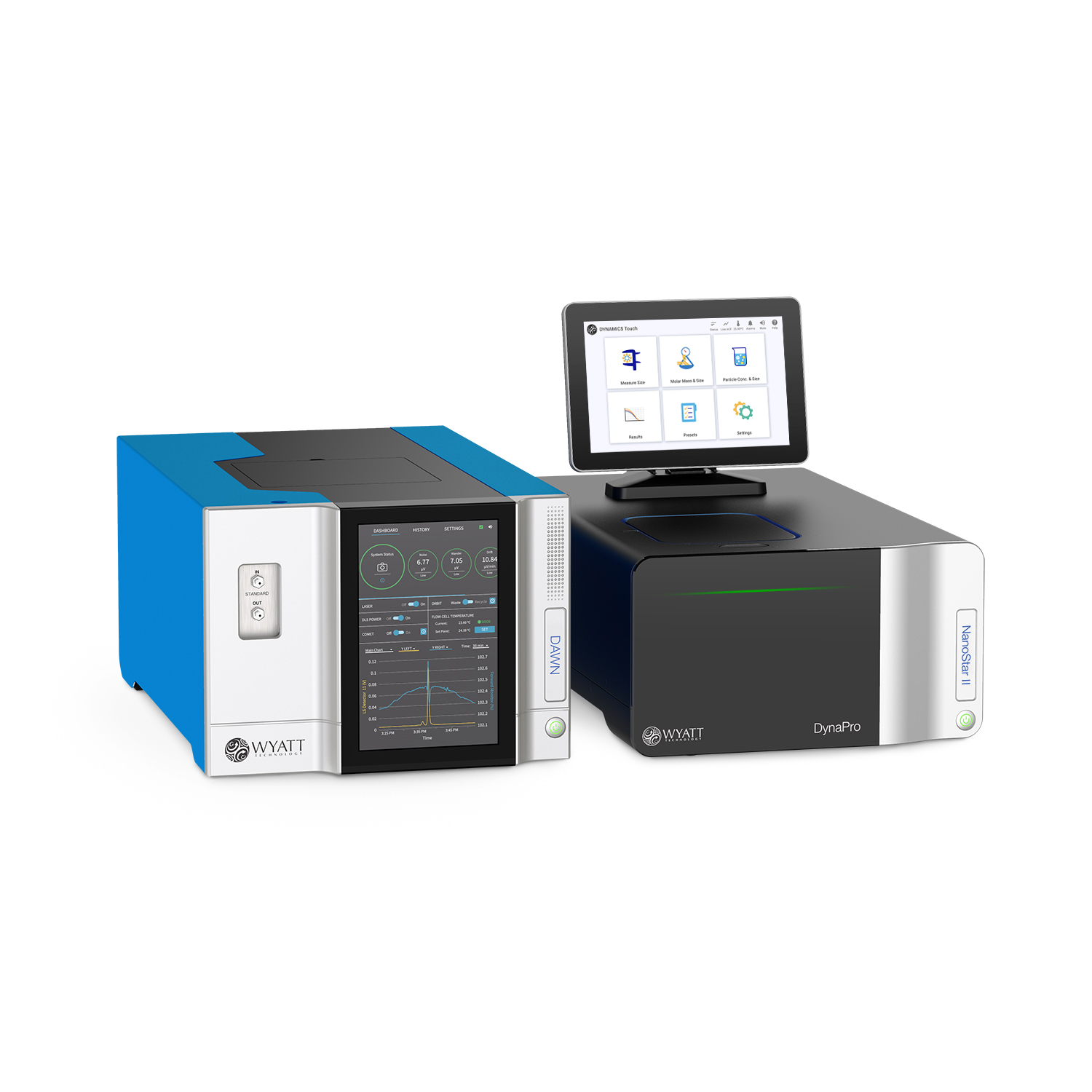
DLS technology
Commercially available DLS instruments generally incorporate an avalanche photodiode (APD) as a single photon counting module (SPCM). APD-based SPCMs are excellent and robust for DLS analysis thanks to their rapid, high-gain response; the NanoStar utilizes a temperature-stabilized APD coupled to an advanced double density, multi-tau (DDMT) correlator for analysis of diffusion coefficients, size and size distributions. The DDMT correlator incorporates 512 bins covering time scales of 100 nanoseconds to 1 hour in order to address a huge span of particle sizes - ranging over hydrodynamic radii Rh of 0.2 nm to 1000 nm.
SLS technology
While size is the primary application of DLS, the measurement of molar mass and particle concentration is often of interest as well. The molar mass of macromolecules having a specific conformation (e.g., globular proteins) may be often estimated from the measured Rh. However, this model-based estimation of mass is often incorrect since many molecules of interest do not correspond to these models.In the NanoStar, molar mass is measured directly from first principles by means of static light scattering (SLS). For particles, like viruses and lipid nanoparticles, a dedicated SLS detector combined with the hydrodynamic radius by DLS provides rapid, robust measurement of particle concentration. Within just a few seconds, you can determine the size of your particles, assess the presence of additional species, and count how many are in solution.
In addition to the SPCM-based DLS detection channel, the NanoStar incorporates a separate, optimized SLS detection channel featuring a highly linear, low noise photodiode - in fact, the same photodiode used in our on-line multi-angle light scattering (MALS) detectors. This SLS channel guarantees sensitive and accurate molar masses from 300 Da to 1 MDa (the upper limit depends on the molecular conformation and the measured Rh).
And more unique technology
In order to ensure that the NanoStar never goes out of range, it comes equipped with automatic attenuation over five orders of magnitude. Its air-launched laser, coupled with proprietary optics for maximum sensitivity, make single-mode optical fiber technology obsolete. The temperature control system in the NanoStar is unequalled in comparable dynamic light scattering detectors, providing rapid temperature ramps with an overall temperature range of -10 °C to +120 °C.
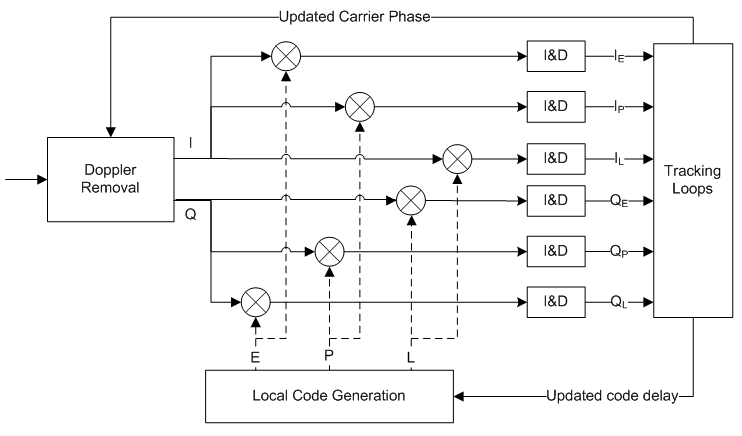
Image credits to the European Space Agency.
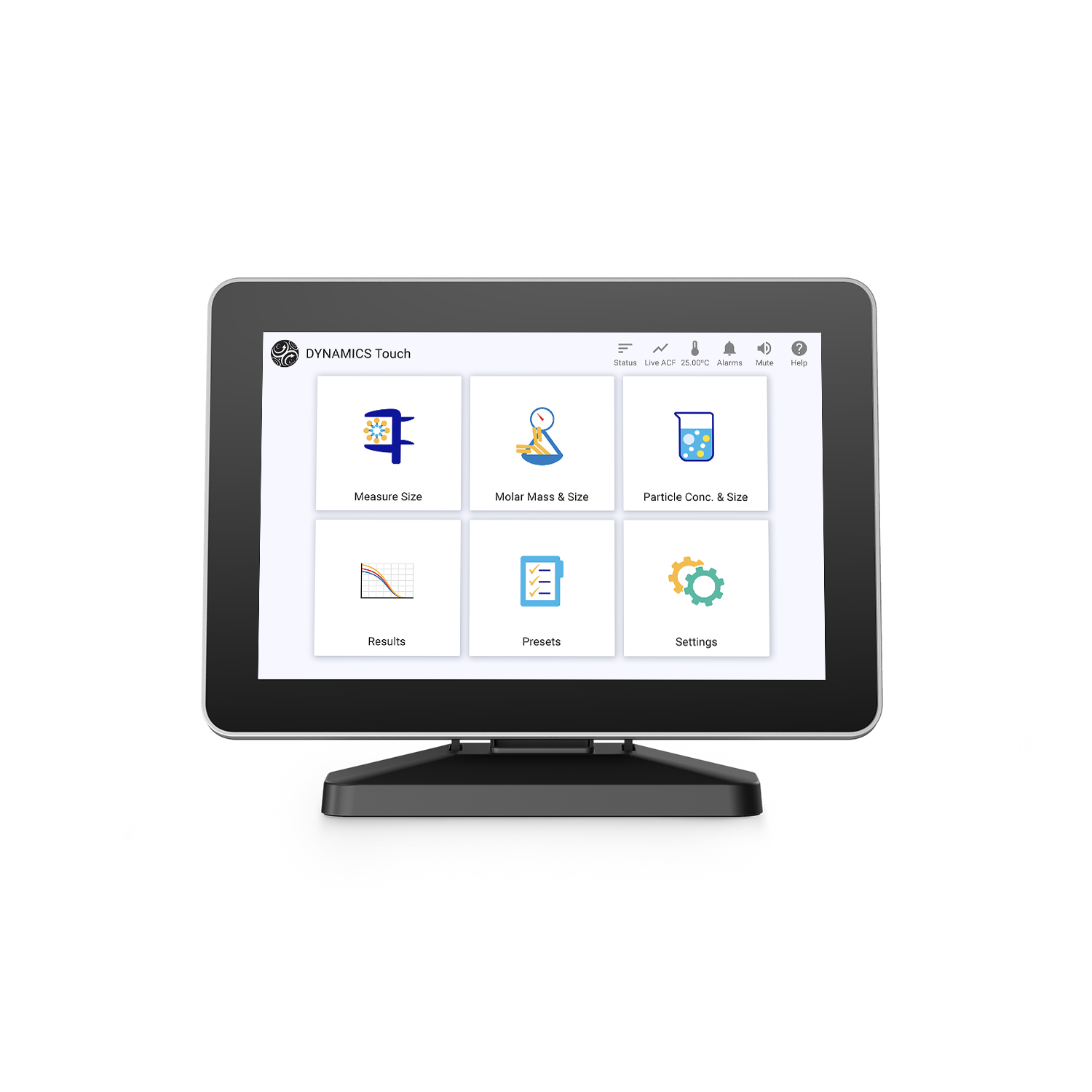
DYNAMICS™ - Performs single and automated experiments and analyzes DLS and SLS data to determine size and size distributions, molar mass, temperature onset of melting or aggregation, particle concentration, second virial coefficient A2 and the diffusion interaction parameter kD.
DYNAMICS is offered with a 21 CFR Part 11 compliant Security Pack option, enabling the use of the DynaPro NanoStar in a GMP environment.
DYNAMICS Touch™ - measure and analyze your DLS results directly on the NanoStar II touch screen with the on-board DYNAMICS Touch. With its user-friendly and minimalistic interface, DYNAMICS Touch makes your walk-up DLS measurements easier and faster than ever before. Naturally, you can also import your data from DYNAMICS Touch for data analysis in DYNAMICS.
| Size Range (Radius) | 0.2 to 1000 nm |
| Static Scattering Molecular Weight Range | 300 Da to 10 MDa* |
| Turbidity Range | 1 to 80 NTU |
| Particle Concentration Range | 1x105 to 1x 1015 (dependent on size) |
| Sensitivity | 0.1 mg/mL of 14.4 kDa lysozyme in PBS |
| Temperature Range | -10 °C to +120 °C** Maximum ramp rate 15 °C/min |
| Sample Options | |
| Sample Cells | Quartz cuvette: 2 μL or 45 μL, Disposable cuvette (cyclic olefin copolymer), generic 4 mL quartz and disposable cuvettes (with adapter) |
| Minimum Sample Volume | 2 μL in quartz cuvette; 4 μL in disposable cuvette |
| Optics | |
| Laser Wavelength | 658 nm |
| Laser Power Control | Programmable 10% to 100% |
| Scattering Angle | 90° |
| Optical Fiber | Multi-mode |
| Additional Detectors | Laser monitor for active stabilization; Forward monitor measures transmitted light for turbidance and laser/cell diagnostics |
| Electronics | |
| Data Acquisition Time | 1 to 3600 sec |
| Correlator | 512 channel, 100 nsec sampling time in a multi-tau layout |
| Dimensions | 57 cm (L) x 36 cm (W) x 20 cm (H) |
| Weight | TBD |
*Upper limit depends on conformation: it is limited to a maximum Rh of 50 nm.
**Dry air or nitrogen required for operation below 20 °C.
Host PC requirements may be found in Computer Requirements.
Specifications subject to change without notice.
Other DLS & ELS instruments
DynaPro™ Plate Reader - The only commercially available instrument that measures DLS and SLS, for size and molar mass, directly in situ in standard 96, 384 or 1536 microwell plates. The non-perturbing DynaPro Plate Reader offers integration with robot liquid handlers and multi-technique plate-based assay protocols. Temperature-controlled over 4 °C to 85 °C.
DynaPro™ ZetaStar™ - A manual or automated light scattering instrument for analysis of size distribution, particle concentration, molecular weight, turbidity and zeta potential of proteins, nanomedicines, gene vectors, extracellular vesicles, nanoemulsions and polymers. It uniquely measures DLS and ELS simultaneously and can measure zeta potential in salts solutions greater than physiological conditions.
